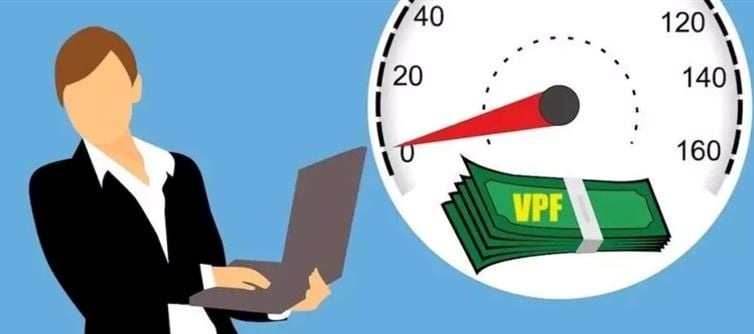
💥 The Silent Theft Behind “No Tax up to ₹12 Lakh”
When the government proudly announced “no tax up to ₹12 lakh”, millions of middle-class taxpayers finally breathed a sigh of relief. After all, it sounded like a long-overdue reward for years of slogging, saving, and surviving inflation.
But what the headlines didn’t tell you is this: that relief came after a quiet massacre of your long-term wealth avenues. Before the government gave you a rupee, it took away thousands from where it mattered most — your retirement fund.
The Voluntary Provident Fund (VPF), once the most reliable tool for secure, compounding, tax-free retirement growth, is now chained by hidden limits and backdoor taxes that punish savers for being disciplined.
💼 The Basics: What Is Voluntary Provident Fund?
For decades, VPF has been the unsung hero of middle-class financial planning. It’s simple — employees voluntarily contribute more than the mandatory 12% of their basic salary (that goes into EPF) into the same account.
The reward?
• Guaranteed 8.25% interest (FY 2024–25), far higher than most bank FDs.
• Same safety as EPF, since it’s government-backed.
• Tax-free returns under the old rules — a big deal for anyone planning a stress-free retirement.
Until recently, it was a no-brainer. You put your money in, it grows steadily, and when you retire, you get a large, tax-free corpus.
Then came the axe.
⚔️ The Tax That Broke the Promise
In 2021, nirmala sitharaman quietly slipped in a line in her Budget speech — interest on EPF + VPF contributions above ₹2.5 lakh per year would now be taxable.
That one line changed decades of retirement planning overnight.
For someone earning ₹12–15 lakh annually, this means:
You can no longer maximize your savings through VPF.
Every rupee you save beyond ₹2.5 lakh begins to bleed interest taxes.
The government effectively discourages saving, while pretending to “reward the middle class.”
Let’s be clear — this wasn’t a policy adjustment. It was a betrayal disguised as reform.
🧾 The ₹12 Lakh Mirage: How Taxpayers Were Fooled
When the Finance Ministry introduced the “no tax up to ₹12 lakh” promise, people cheered — finally, some respect for the hardworking salaried class.
But peel back the layers and you’ll see the trade-offs:
• New taxes were quietly introduced on what used to be safe, untouchable returns.
• Deductions that once cushioned middle-class earners were slowly erased.
• Retirement-oriented instruments like VPF were capped, restricted, and taxed.
In short — they gave with one hand and took away with both.
It’s the oldest political illusion: announce relief loudly, impose new taxes silently.
💣 The Psychological Hit: Punishing the Disciplined
Who benefits from this? Not the reckless spender. Not the speculative trader.
It’s the honest taxpayer, the salaried worker who saves bit by bit for their family’s future, who gets hit hardest.
The message from the system is clear:
“If you save more, we’ll tax you more.”
This isn’t just about money — it’s about trust.
The government is effectively punishing discipline and rewarding consumption.
And yet, the same policymakers talk about “financial inclusion” and “retirement readiness.”
💡 The Missed Opportunity: Why VPF Still Matters
Despite the betrayal, the Voluntary Provident Fund remains one of the most powerful tools for those who can still use it smartly.
• You can contribute up to 100% of your basic + DA through payroll.• It still earns the same EPF interest rate (8.25%), higher than most FDs or savings instruments.
• As long as your total EPF + VPF contribution stays under ₹2.5 lakh a year, the interest remains fully tax-free.
Used wisely, it can still be your best bet for a safe, stable, and inflation-beating retirement corpus.
But don’t be fooled — this is no longer a “set-and-forget” system. It demands constant vigilance.
⚠️A Bitter Truth for the Middle Class
India’s salaried class is being slowly squeezed between optics and policy.
The illusion of tax relief hides a deeper erosion of long-term wealth.
Every time a government celebrates “tax cuts,” remember to check what they taxed before announcing it.
Because behind the grand speeches and trending hashtags lies a grim reality —
Your financial freedom wasn’t gifted. It was traded away.
VPF still works — but not like it used to.
It’s no longer the “tax-free compounding paradise” it once was, thanks to the ₹2.5 lakh limit.
Yet, for disciplined savers, it remains a strong, government-backed retirement booster — just one that now requires sharper strategy and deeper awareness.




 click and follow Indiaherald WhatsApp channel
click and follow Indiaherald WhatsApp channel